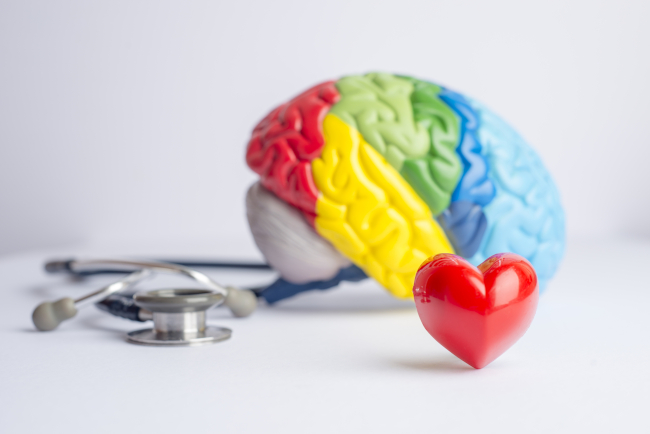Opioid Withdrawal: Symptoms and Timeline

Those who are dependent on opioids can experience unpleasant and uncomfortable withdrawal symptoms when they stop using them. As the opioid crisis continues to affect people’s lives, it’s imperative to provide educational resources on how to combat opioid addiction best. This article aims to provide informational guidance on what to expect during opioid withdrawal.
What are Opioids?
Opioids are a class of drugs that include both legal prescription pain relievers, such as oxycodone, hydrocodone, morphine, and fentanyl, as well as illegal drugs like heroin. These substances are effective in managing pain but have a high potential for addiction and abuse. They work by binding to opioid receptors in the brain, reducing pain perception but also producing feelings of euphoria, which can lead to dependence.

Opioid Withdrawal Symptoms
When stopping the use of opioids, especially after long term use, withdrawal symptoms can occur as the body adjusts to their absence. These symptoms vary in intensity but typically include:
- Anxiety or agitation
- Muscle aches
- Insomnia
- Sweating
- Abdominal cramping
- Diarrhea
- Nausea and vomiting
- Dilated pupils and blurry vision
- Rapid heartbeat
How Long Does Opioid Withdrawal Last?
The duration of opioid withdrawal varies from person to person, influenced by factors such as the type of opioid used, the length of use, individual health, and the method of detoxification. However, there is a general opioid withdrawal timeline that many experience:
- Early Withdrawal Symptoms: These typically begin within 6 to 12 hours for shorter acting opioids (like heroin) and within 30 hours for longer acting opioids (like methadone). Early symptoms often include muscle aches, anxiety, increased tearing, insomnia, runny nose, excessive sweating, and frequent yawning.
- Peak of Symptoms: The most intense withdrawal symptoms usually peak around 72 hours after the last use and can last for a week. During this period, symptoms like nausea, vomiting, diarrhea, and abdominal cramping are common. This phase is often the most challenging, where support and medical assistance can be crucial.
- Subacute Withdrawal Phase: Following the peak, many individuals experience a subacute withdrawal phase, which can last for a couple of weeks. Symptoms during this phase often include ongoing mood swings, decreased energy, anxiety, and variable sleep patterns.
Factors Influencing Duration
Several factors can influence the length and severity of opioid withdrawal:
- Type of Opioid: Short acting opioids generally lead to quicker onset but shorter duration of withdrawal symptoms. In contrast, long acting opioids may result in a delayed onset but a longer withdrawal process.
- Method of Use: How the opioids were used (injected, snorted, swallowed) can also impact the withdrawal timeline.
- Amount and Frequency of Use: Higher doses and more frequent use often lead to more severe withdrawal symptoms.
- Individual Physiology and Health: Factors like metabolism, overall health, and the presence of co-occurring mental health issues can affect the duration and intensity of withdrawal.
What is the Clinical Opioid Withdrawal Scale?
When addressing opioid withdrawal, it’s crucial to have a standardized way to assess and measure the severity of symptoms. This is where the Clinical Opioid Withdrawal Scale (COWS) comes into play. Designed for healthcare professionals, the COWS is a tool used to rate and monitor opioid withdrawal symptoms, ensuring that individuals receive the appropriate level of care during detoxification.

Does Medication Help with Opioid Withdrawal?
When navigating the challenging path of opioid withdrawal, one of the critical questions that arise is whether medication can help ease the process. The short answer is yes; certain medications can significantly aid in managing withdrawal symptoms, making the journey toward recovery more manageable and comfortable.
Medications used for opioid withdrawal serve the following key purposes:
- Alleviating Physical Symptoms: Certain medications can effectively reduce physical symptoms such as nausea, diarrhea, and muscle aches.
- Reducing Cravings: Some medications help in decreasing the intense cravings for opioids, a major hurdle in early recovery.
- Addressing Psychological Symptoms: Medications can also play a role in managing anxiety, depression, and other mental health issues associated with withdrawal.
Commonly Used Opioid Withdrawal Medications
Several medications have been approved and are commonly used to treat opioid withdrawal symptoms:
- Methadone: A long acting opioid, Methadone reduces cravings and withdrawal symptoms by acting on the same opioid receptors as other opioids but without producing the same high.
- Buprenorphine: Often used in combination with Naloxone (as in Suboxone), Buprenorphine lessens withdrawal symptoms and cravings. The addition of Naloxone deters misuse.
- Clonidine: Primarily used to treat high blood pressure, Clonidine can also alleviate certain withdrawal symptoms like anxiety, agitation, muscle aches, sweating, and runny nose.
- Naltrexone: This medication blocks the effects of opioids at the receptor level, which can help prevent relapse. It’s typically used after detoxification.
Many people explore medication options during withdrawal alongside checking what parts of treatment their insurance may support. You can learn more about rehab options to get a clearer sense of how coverage works for detox services, medications, and follow-up care.
Can You Detox From Opioids At Home?
A common question from individuals in early recovery is whether it’s possible and safe to detox from opioids at home. While home detox is an option for some, it’s crucial to understand the risks and considerations involved to make an informed decision.
Home detox refers to the process of allowing your body to rid itself of opioids without clinical supervision. However, it’s essential to consider several factors:
- Severity of Addiction: Home detox may be more suitable for individuals with a less severe addiction and a shorter history of opioid use.
- Physical Health: Overall health and the presence of co-occurring medical conditions can significantly impact the safety and success of home detox.
- Support System: A strong and supportive environment is crucial for a home detox. This means having people who can provide emotional support and assist in case of emergencies.
When to Consider Professional Detox
Professional detox in a medically supervised setting is often recommended due to several advantages:
- Medical Supervision: Continuous monitoring by healthcare professionals ensures safety and comfort.
- Medication Assisted Treatment: A combination of behavioral therapy and access to medications that can alleviate withdrawal symptoms.
- Comprehensive Care: Professional detox often includes or is linked to counseling, therapy, and support services, addressing the broader aspects of addiction.
Seeking Professional Help and Support
Remember, you are not alone in this journey. Seeking professional help, whether for detoxification, ongoing treatment, or emotional support, is a sign of strength and commitment to your health and well being. There are numerous resources available, including healthcare providers, addiction specialists, support groups, and counseling services.
If you’re comparing treatment settings or looking for programs that match your level of need, tools that list centers and services can help you get oriented. You can learn more about rehab options to browse nearby providers and supportive resources.
Addiction Centers That Treat Opioid Addiction
Finding facilities near you…